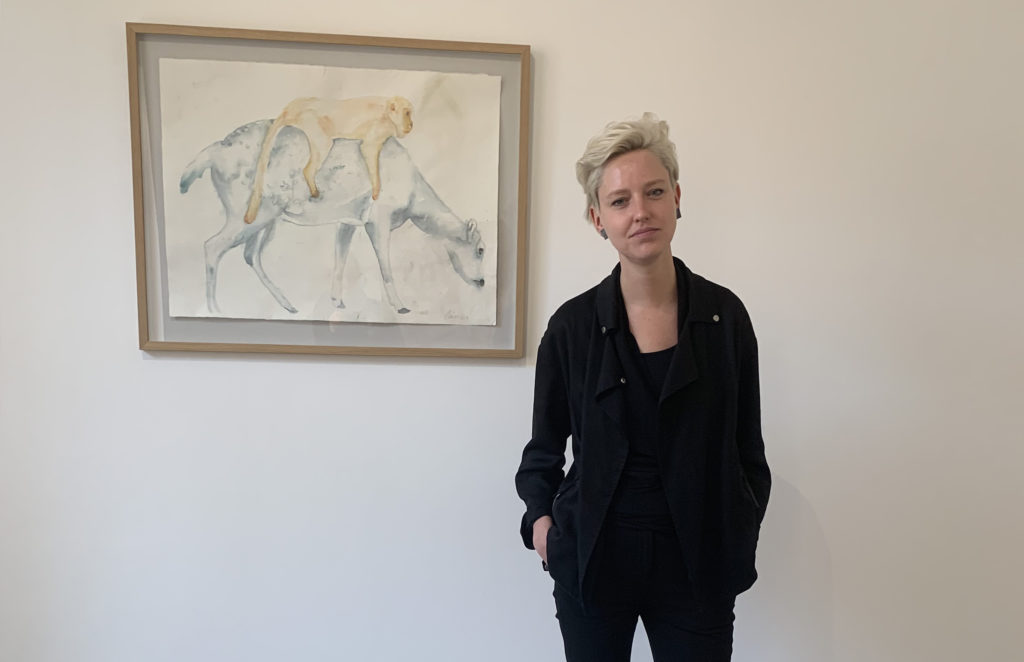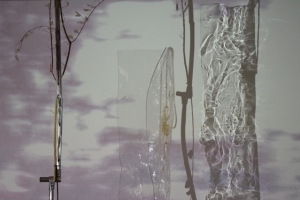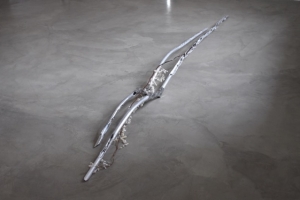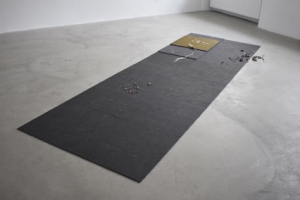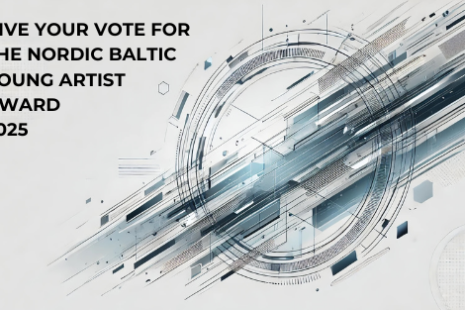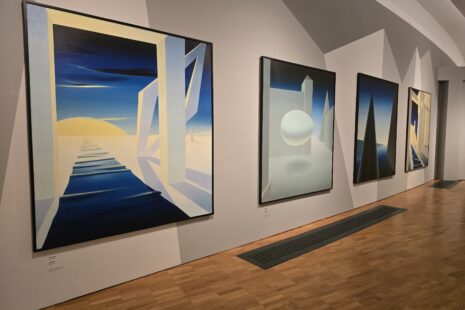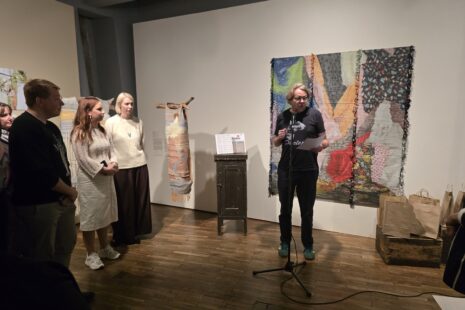How would you describe Vilnius contemporary art scene?
It is growing and getting more and more interesting, because a lot of talented artists graduate from Vilnius Academy of Arts and various new galleries and art spaces open their doors.
There are rumours in London that Vilnius could be the next Berlin! It could be so as we have a great potential, but of course, we need a lot of time and effort to achieve it. Everyone needs to do their part – artists should not stop looking for new ways for creativity; galleries should attract wider audiences, who would appreciate contemporary art and invest in it. Education also plays a big role here, helping people to get closer to art. As Lithuanian art market is very small, we all need to work very closely to make the impact bigger and more moving.
What are the contemporary art venues every art lover should visit in Vilnius?
In my opinion, the main venues that often hold interesting exhibitions and projects are The Contemporary Art Center and the National Art Gallery. They present well curated local and foreign artists’ exhibitions in every 2-3 months. Mo Museum presents one of the largest private collections in Lithuania, focusing on the second part of twentieth century Lithuanian art. They also do a great job in making contemporary art scene more alive and even more accessible, reaching wide audience from different social levels and ages.
I should also mention the exhibition halls of Vilnius Academy of Arts called “Titanikas” and one of oldest private galleries “Vartai” that have well focused art programmes.
What’s unique about the Lithuanian artists? Is there something really special about Lithuanian art scene?
It is difficult to say, every country has its own characteristics. Talking about artists represented by galleries – they all manage to combine technique with a concept and an idea and also make them complement each other. Of course, we live in a globalised world and things surrounding us also have an influence, Lithuanian artists are not an exception. Some of them are inspired by relevant European subjects and touch geopolitical and social issues in their works, others dissociate themselves and work purely with shape and aesthetics.
Could you recommend also some Lithuanian artists?
AV17 gallery mainly works with sculpture, object and installation art and I would recommend exploring some of the young and middle age artists as they present really different and exceptional artworks. Nerijus Erminas is one of the most interesting conceptual sculptors in Lithuania. His works are characterised by sensitive transformation of reality into surreal and subconscious experiences.
Meanwhile Rimantas Milkintas creates in totally different style combining characteristic minimalist aesthetics and kinetic plasticity. Due to focus on the significant form of a work of art and its material properties, creations of the artist are often compared to those of Lithuanian and foreign classics of modernism. And finally young creator – Jonas Aničas working on find materials in nature and periphery of cities. And of course there are many other talented local artists that are worth keeping eye on.
How do you put together the program of the gallery?
We do six exhibitions in a year at the gallery, trying to give attention both to local and foreign presentations. Part of them is dedicated to young Lithuanian artists, as there is a lack of spaces for them to show their works. Another part is for acknowledged Lithuanian sculptors and then the third part is dedicated to foreign artists. In the programme of 2019 we have had exhibitions of well-known local interdisciplinary artist Kristina Inčiūraitė, sculptor Nerijus Erminas and Estonian artist Edith Karlson. At the moment the gallery presents an exhibition of Italian-Slovene artist Luca Vanello, and we are also preparing for our autumn season which will start with the exhibition of young, emerging artist Džiugas Šukys.
An exhibition by well-known Estonian artist’s Edith Karlson just ended in AV17, how was Edith chosen for the gallery exhibition?
I think that the art scene in Baltic countries is very unique and promising, and we need to share our ideas and projects. AV17 gallery have already presented well-known Latvian artists’ shows, such as Andris Eglitis, Katrina Neiburga and Kaspars Podnieks.
One of the strongest galleries in Estonia – “Temnikova and Kasela” gallery has a really good art programme which includes Edith Karslon’s presentation. Edith’s ability to mix ancient mythologies, creatures of her fantasy and make them communicate with each other throughout her unique art production impressed me. I invited Edith to come to Vilnius and she was very interested in exploring new horizons, it was her first solo exhibition in Lithuania.
Photo material from Edith Karlson exhibition “Four Letter World”
At the beginning of next year we will present another Estonian artist Kristel Saan. Her exhibition will be part of the exchange project with Kogo gallery in Tartu, where young Lithuanian sculptor Anastasia Sosunova will show her works in November.
Who are the main visitors of the gallery?
Mostly young people, from 18 to around 40, students, young professionals, people, who are interested in contemporary conceptual art. We also have some foreign visitors mostly during spring and early autumn, when Vilnius is more green, live and attractive.
Gallery has different target groups – visitors and clients?
Our programme is filled with exhibitions of conceptual installation that our audience really loves and appreciates. But there is also a demand from our clients of smaller objects and sculptures that can be placed at homes, offices, easily adapted to the interior. Artists find it also interesting working in different scales, from site-specific installations to smaller objects. I think the balance of these both sides satisfies all of us – clients, visitors, artists and the gallery.
What kind of projects AV17 has abroad?
Every year we organize exchange projects with different European galleries, this year we will collaborate with Kogo in Estonia and with Centre of Polish Sculpture in Orońsko. The latter is a leading institution in Poland focusing not only on sculpture exhibitions, but also on education and residencies. Tauras Kensminas and Jonas Aničas will reside in Orońsko for two weeks and at the end their group show is presented in one of the venues. For the last four years we have been attending an international music and art festival “Zemlika” in Latvia, where we present Lithuanian artists. Previous years we have presented Lithuanian artists at Vane gallery in Newcastle, Dimora Artica in Milan, Rockelmann& in Berlin, etc.
Do you participate in ArtVilnius?
We attended ArtVilnius for three years in a row, from 2012 to 2014. It was a really good experience as we presented big installations and at that moment it was quite unusual at ArtVilnius. Since couple of years we decided to focus more on foreign markets and participated in “Volta” (New York), in “Fresh Paint” art fair (Israel), a couple of years in a row we were also present in “Positions” (Berlin). In February we attended “artKarlsruhe” in Germany, last autumn we were at “ArtVerona” in Italy.
Current exhibition at the gallery is Luca Vanello “Moist Muscles Await”, can you tell little bit more about it?
In his research-informed creative process, Luca Vanello deforms non-human entities and matter by exploring their social, technological and biological implications. By employing physical manipulation as a conceptual tool, the artist entwines collective and individual narratives with material modifications. In the exhibition ‘Moist Muscles Await’ Vanello reflects humanity’s relentless attempts to control time and it’s inevitable failure. In his diverse sculptural processes, he reverses history-filled everyday objects back into their original states, as if trying to turn back time. By removing the plants’ chlorophyll, Vanello suspends their biological circulation and stops the life cycle. Objects created with the help of manipulation form a unified system in the exhibition, in which the vulnerability of matter, imperfection and the temporality of existence can be perceived.

